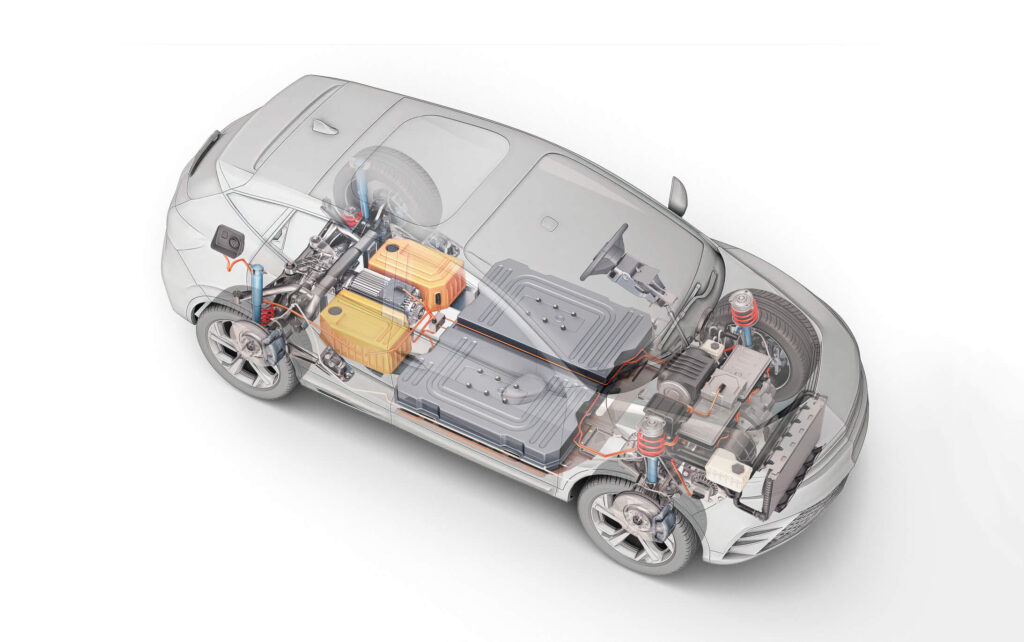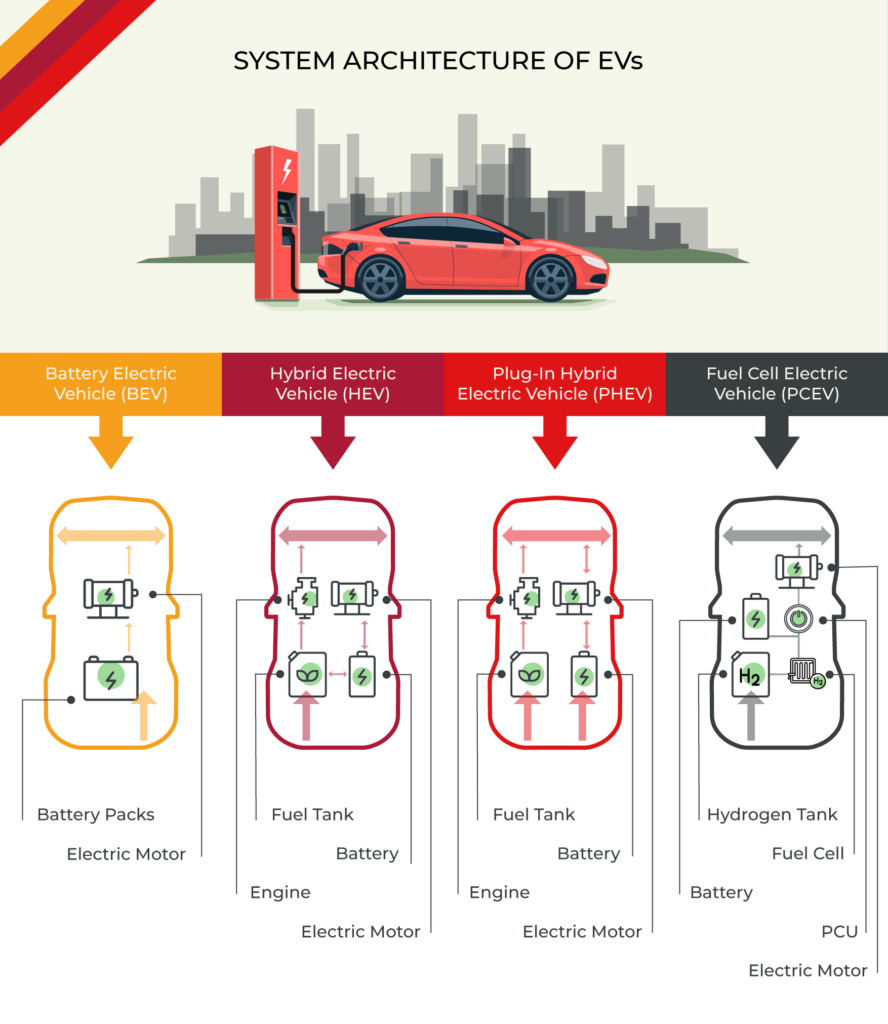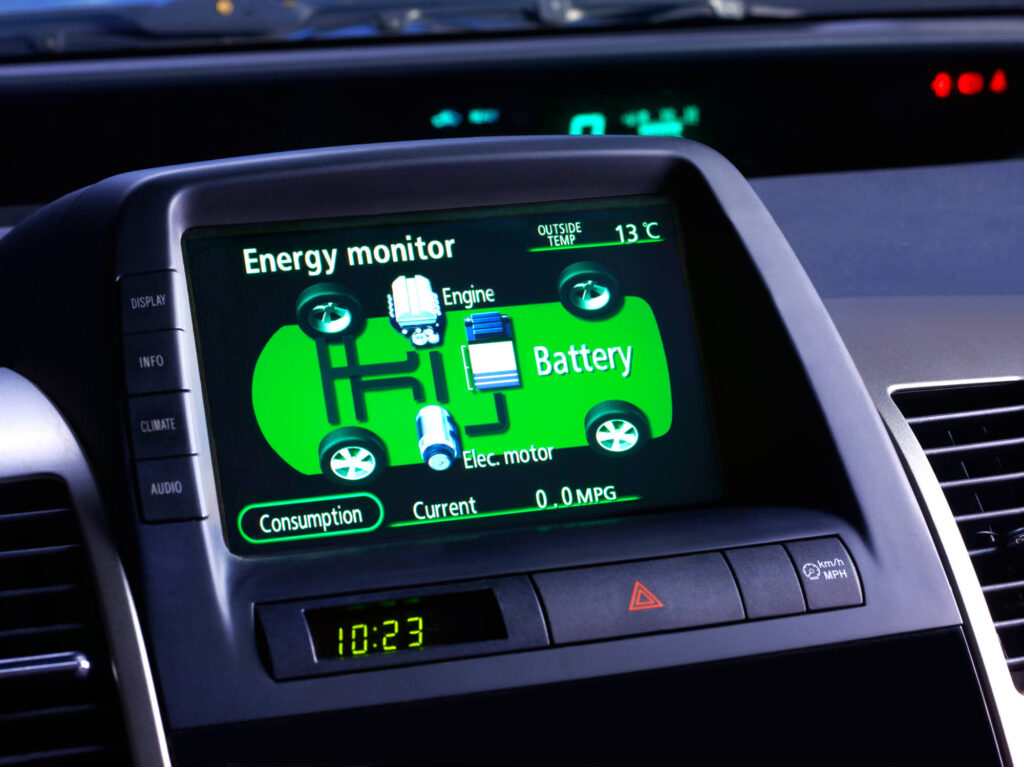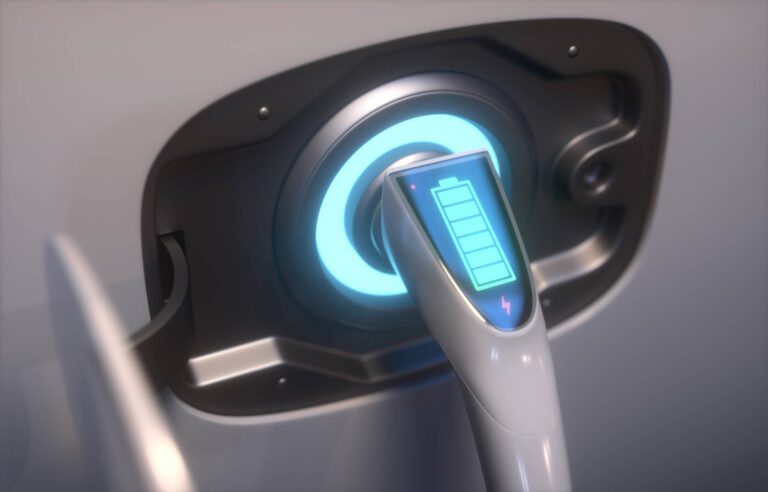As the world strives to become more sustainable, the automotive industry is changing with the rise of electric vehicles (EVs).
Electric vehicles provide a cleaner, more efficient alternative to conventional fuel-powered cars, and they are quickly expanding in variety and accessibility. Each form of EV caters to a particular set of demands and tastes, with varying ranges and battery sizes, EV charging methods and driving styles. Fully electric vehicles offer zero emissions, while hybrids combine traditional and futuristic technologies.
EVs are becoming more affordable and accessible as the market grows, and many countries are making the switch to electric vehicles. According to IEA’s Global EV Outlook 2024, in 2023, sales of electric cars approached 14 million, with the majority (95%) occurring in China, Europe, and the US.
4 Types of Electric Vehicles

The four main categories of electric vehicle are:
- Battery electric vehicles (BEVs)
- Plug-in hybrid electric vehicles (PHEVs)
- Hybrid electric vehicles (HEVs)
- Fuel cell electric vehicles (FCEVs)

Their distinctive qualities, advantages, and contributions to the advancement of automotive technology are highlighted below.
1. Battery Electric Vehicles (BEVs)
Battery electric vehicles run only on the electricity that is kept in their batteries, which are recharged using external power sources, meaning they are powered solely by an electric battery. Being emissions-free, BEVs are renowned for their efficiency and environmental benefits. For customers that care about the environment and want to lessen their carbon footprint, this is an ideal choice.
Examples: Tesla Model S, Nissan Leaf, Renault Zoe
Pros:
- Zero emissions: Entirely electric and emits no emissions from the exhaust.
- Cost-effective: Because they require less maintenance and no petrol, they are typically less expensive to run than fuel-powered cars.
- Quick acceleration: Instant torque from electric motors provides a smooth and responsive driving experience.
- Government benefits: There are tax benefits and government incentives for purchasing a BEV, available in many countries.
Cons:
- Range anxiety: Limited range and sparse charging infrastructure can be concerns.
- Long charging times: Takes longer to charge compared to refuelling fuel vehicles.
- Higher upfront cost: Often more expensive initially due to the cost of batteries.
2. Plug-in Hybrid Electric Vehicles (PHEVs)
Hybrid Plug-in Electric vehicles are a cross between fully electric and traditional hybrids. When the battery runs low, PHEVs can use an internal combustion engine instead of recharging their batteries directly from an electrical outlet and continuing to run on electricity. This dual functioning lessens dependency on fossil fuels while enabling longer driving range. They are perfect for drivers who wish to take advantage of electric propulsion but are not yet ready to commit to a completely electric vehicle.
Examples: Toyota Prius Prime, Chevrolet Volt, Mitsubishi Outlander PHEV
Pros:
- Versatile fuelling: Able to extend range by switching between fuel and electric.
- Lower emissions than petrol cars: Reduced pollution when driving on electric power.
- Government incentives: Possible tax credits and rebates.
Cons:
- Complex systems: More parts to maintain than a standard vehicle.
- Short electric range: Limited to about 20-40 miles (32-64 km) on electric power alone.
- Less efficient on fuel: Reduced efficiency when operating on petrol.
3. Hybrid Electric Vehicles (HEVs)

Hybrid electric vehicles have both an electric power system and an internal combustion engine. HEVs are not able to plug into an electrical outlet like PHEVs can; instead, the internal combustion engine and regenerative braking are used to charge the batteries. When compared to conventional fuel-powered automobiles, this technology helps to increase fuel economy and lower emissions. One of the best-known HEVs and a major contributor to the rise in popularity of hybrid technology is the Toyota Prius.
Examples: Toyota Prius, Mazda 2 Hybrid, Toyota Yaris Cross
Pros:
- Improved fuel efficiency: Uses less fuel than traditional cars, especially in city driving.
- Reduced emissions: Lower pollutants due to partial electric propulsion.
- Convenience: No need for external charging.
Cons:
- Limited electric power: Minimal electric-only operation.
- Higher cost than conventional cars: Fuel savings can offset the initial cost.
- Battery replacement costs: Can be expensive, though they generally last long.
4. Fuel Cell Electric Vehicles (FCEVs)
Fuel cell electric vehicles run on hydrogen gas fed into a fuel cell. The fuel cell produces electricity to run the motor. FCEVs are very clean because they generate all of their electricity internally and only release water vapour, in contrast to battery-powered cars. In addition, they have a longer range and quicker refuelling times than regular cars. They embody an innovative approach to electric vehicle technology, especially appropriate for areas making investments in hydrogen infrastructure.
Examples: Hyundai Nexo, Toyota Mirai
Pros:
- Efficient and clean: Converts hydrogen to electricity with high efficiency, emitting only water.
- Quick refuelling: Similar refuelling time to petrol vehicles.
- Comparable range to conventional cars: Suitable for long distances.
Cons:
- Infrastructure issues: Few hydrogen refuelling stations available.
- High vehicle and fuel costs: Technology and hydrogen are costly.
- Environmental concerns: Hydrogen production is not always green.
Conclusion
As infrastructure and technology advance, electric cars are growing more and more attractive as a greener mode of transportation. Beyond the types discussed above, the market also includes Low Carbon Vehicles (LCVs) and Alternative Fuel Vehicles (AFVs), Mild Hybrid Electric Vehicles (MHEVs) and more. They all have their own benefits and drawbacks. The various needs of contemporary drivers are reflected in the advantages and difficulties that each form of electric car has to offer. The above article is a basic introduction to the different types of electric vehicles. To find out more, refer to the specification provided by the manufacturer of the electric vehicle.












